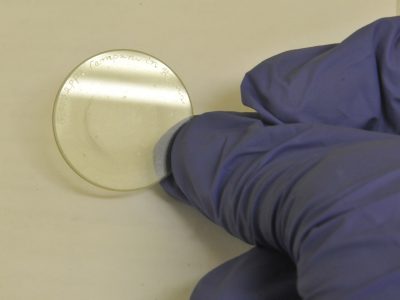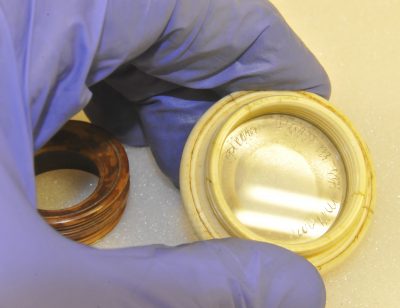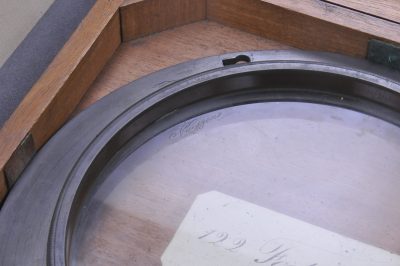Marvin Bolt, the Museum’s curator of science and technology, traveled to Europe last fall to research some of the world’s oldest telescopes. Read along to hear about his adventures and discoveries.
The Science Museum, London was founded in 1857 to house objects exhibited in the Great Exhibition of 1851 at the Crystal Palace, a demonstration of the architectural possibilities of glass. The museum now houses an extensive science collection, including dozens of historic telescopes.
As usual, we had submitted a list of items we wished to examine. And, as usual, we also requested the opportunity to see the store, which in England means the storage facility rather than the gift shop. We had identified more than a dozen candidates ahead of time, and we also noted about a dozen items in storage that deserved some attention. Clearly, we had our work cut out for us. Oh, and by the way, curator Alison Boyle told us, the Royal Society of London has invited you to visit tomorrow afternoon so that you check out three 17th-century lenses made by Huygens, including one given to Isaac Newton. Do you want to go? Uh, yes, I think we could be convinced to do that!
Wow, where to start? I saw a few things that immediately seemed interesting. Indeed, one unidentified instrument turned out to be made by Giuseppe Campani, probably an early example by the leading telescope maker of the day. Another one was by Pietro Patroni, another noted Italian maker, a leading maker of a subsequent generation. Both signed their lenses.
- Campani lens with signature
- Patroni lens with signature
Campani also made microscopes, one of which is on display in our current exhibition, Revealing the Invisible: A History of Glass and the Microscope.
We selected two dozen instruments to examine, and set to work. We were again somewhat alarmed that we could look at an instrument from 1675 or 1700, and then dismiss it as not meriting more attention in the time we had. A few really stood out, though, none more so than a remnant of telescope. Why? Because it had an eyepiece with five lenses, which textual sources suggest date from either the 1750s or from the 1640s. And it doesn’t look like the ones known from the 1750s, but there are none that survive from the 1640s, although these are known from illustrations and theoretical discussions only. So, we’re not sure how to date this object. And that’s one reason why this kind of research is so interesting.
On day two, in the midst of our intense study, we took off two hours to explore the Royal Society lenses several miles away. Cab rides are not particularly quick in mid-day London, so we had to restrain ourselves and not get sidetracked at the Royal Society. That’s not our strong point, to be sure.
The unexpected bonus of our visit was a small exhibition on microscopes, which included a few resemblances to highlights of our own microscope exhibition, so I was quite pleased at our planning efforts.
The Huygens lenses at the Royal Society took our breath away: they are part of aerial telescopes – telescopes built without tubes – that have lenses separated by 120 feet, 170 feet, and 210 feet!
- Huygens lenses at the Royal Society
- Huygens lenses at the Royal Society
When we return to the Science Museum, we discover that the eyepieces there are partners to the 120-foot objective lens at the Royal Society, and hope that they can be reunited.
After we leave the Science Museum, Michael and I are both speechless at the unusual happenings of the day and of the week. That, too, is a unusual occurrence.







